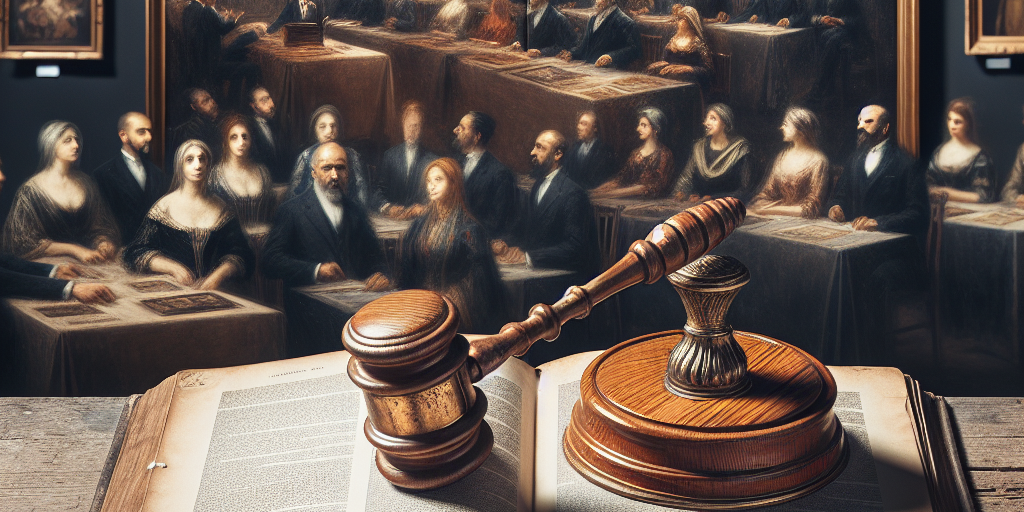Mastering the Art Auction: A Comprehensive Guide to the Bidding Process
Art auctions have long captivated the imaginations of collectors, investors, and art enthusiasts alike. They are theatrical, high-stakes showdowns where masterpieces change hands and fortunes are made — or sometimes lost. With the allure of acquiring a rare piece of art comes the intricate and often daunting process of bidding. For those new to the art auction scene, this guide aims to demystify the process and provide the strategic insight necessary to master it.
Understanding the Basics
Before diving into the mechanics of bidding, it’s crucial to familiarize oneself with the auction landscape. Major auction houses like Sotheby’s, Christie’s, and Phillips host some of the most prestigious art auctions, while local and online auctions can be valuable venues for emerging artists and more affordable pieces. Understanding the type of auction—whether live, online, or sealed-bid—is essential, as each format requires different strategies.
Preparing for the Auction
-
Research is Key: Before attending an auction, it’s vital to research the artists and artworks up for sale. This includes understanding the artist’s career, the provenance of the piece, and its condition. Auction houses often release catalogs detailing each item, and these should be studied meticulously.
-
Setting a Budget: Determine what you’re willing (and able) to spend. Art auctions can be fast-paced, and without a firm budget, it’s easy to get swept up in the excitement and bid beyond your means.
-
Pre-Auction Viewings: Attending pre-auction viewings allows prospective buyers to inspect items closely. This can also be a great opportunity to speak with specialists to gain additional insights.
- Registration: Before participating, bidders must register with the auction house. This usually involves providing identification and potentially proof of funds.
The Bidding Process
-
Understanding the Language: Familiarize yourself with auction terminology. Terms like “reserve price” (the minimum price the seller is willing to accept) and “hammer price” (the final bid when the auctioneer closes the bidding) are essential to understand.
-
Bidding Strategies:
- Opening Bid: The first bid can set the tone. Some strategists prefer to wait until the bidding starts to gauge interest, while others make an assertive first bid to deter competition.
- Incremental Bidding: Unlike eBay, art auctions often involve bidding increments. Understanding these increments can help in planning how aggressively or conservatively to bid.
- Psychological Tactics: Experienced bidders often use psychological tactics — such as projecting confidence or creating a sense of urgency — to sway competitors.
-
The Role of the Auctioneer: The auctioneer is both a guide and an orchestrator, directing the pace and energy of the bidding. Paying close attention to the auctioneer helps bidders gauge real-time interest and competition.
- Online and Telephone Bidding: For those unable to attend in person, online and telephone bidding are viable options. However, technical proficiency and a strong, reliable connection remain vital to avoid missed opportunities.
After the Auction
-
Winning the Bid: If you win, the next steps involve payment and arranging for the art’s delivery. Be aware of additional costs such as buyer’s premiums and taxes, which can significantly raise the final amount due.
- If You Don’t Win: Not winning can be disappointing, but it also offers a learning experience. Reviewing what occurred, analyzing where you might adjust your strategy, and preparing for the next opportunity are all part of the process.
Conclusion
Successfully navigating an art auction requires more than just financial prowess; it demands preparation, strategy, and a keen understanding of human behavior. By mastering these elements, bidders increase their potential to secure valuable artworks and perhaps even enjoy the thrill of the chase. Whether you dream of acquiring a Picasso, a Warhol, or an exciting contemporary piece, art auctions offer a unique pathway into the art world, where every paddle raise holds the promise of a new addition to one’s collection. With this guide in hand, you’re better equipped to step into the art auction arena with confidence.







